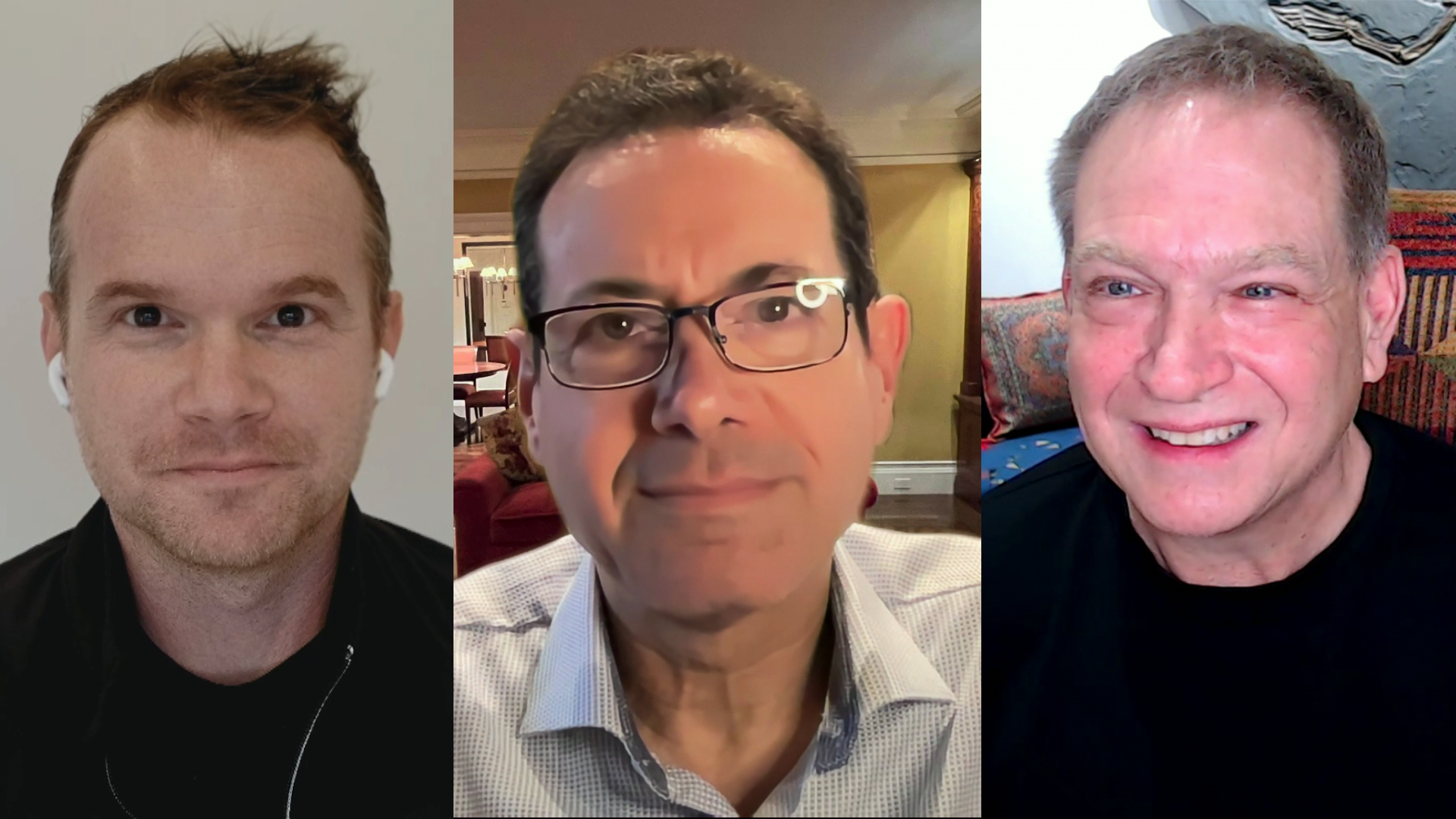 CLOUD
CLOUD
 CLOUD
CLOUD
 CLOUD
CLOUD
Wikibon’s Supercloud Definition 3.0 provides a comprehensive description of the architectural model evolving out of today’s sprawl of multi and hybrid clouds.
The paper was written after the first Supercloud event hosted by theCUBE and provides a definition that incorporates the opinions and technological nuances discussed by experts during that event. While it is informative, it is not a fast nor a simple read. In a panel discussion during Supercloud2, an exclusive broadcast on theCUBE, SiliconANGLE Media’s livestreaming studio, Bob Muglia (pictured, right), former president of Microsoft’s Enterprise business and former chief executive officer of Snowflake Inc., provided a more concise definition. (* Disclosure below.)
“A supercloud is a platform that provides programmatically consistent services hosted on heterogeneous cloud providers,” Muglia stated.
Muglia along with George Gilbert (center), principal analyst and investor at TechAlpha Partners and Tristan Handy (left), founder and chief executive officer of dbt Labs Inc., joined theCUBE industry analyst (and Supercloud Definition 3.0 author) Dave Vellante for the Supercloud2 session “How Supercloud Will Support a New Class of Applications.”
They discussed how supercloud is enabling the development of a new breed of apps that can orchestrate things in the real world.
While the idea of supercloud is groundbreaking to much of the enterprise technology world, it’s simply putting into words a concept that’s very familiar to others.
“There are many folks, myself included, for whom this world fully exists today,” Handy said after reviewing theCUBE’s supercloud content. “I read through this, and I’m just like, ‘Yeah, this is like the world I’ve been living in for years now.”
dbt Labs has the goal to “make data transformation reliable, fast and fun” through a development framework that builds on the modern data stack, extending it to add a semantic layer that describes the data. This breaks down the language barrier between data science and data analytics teams, with models able to connect regardless of if they were created in Python or SQL. This means that Handy is well-positioned to discuss the move toward the development of data applications.
Noting the “API-ification” of application development over the past decade, he pointed out that “concepts that live inside of your data warehouse, inside of your data lake” have been missed because there is a lot of challenging data pipeline engineering and other work involved in creating applications around them. “If you really want to make it very easy to create some of these data experiences for users, you need to have an ability to describe these metrics and then to turn them into APIs to make them accessible to application developers who have literally no idea how they’re calculated behind the scenes,” Handy added.
As opposed to the current conception of applications as ways to codify forms or business processes, data applications will be about orchestrating people, places and things within the business ecosystem.
“Where applications that we’re familiar with respond to people, data apps respond to changes in data. And they both do something, but they do it for different reasons,” Muglia said.
The debate heats up as the conversation dives into alternate data futures, with Muglia, Handy and Gilbert each describing a slightly different vision for what the next five to 10 years will bring.
Predicting that “in the next 10 years, we’re going to move to a world where organizations are defining models first of their data but then ultimately of their business process, their entire business process,” Muglia described a world where models will define “the full attributes of the business, all of the business rules, all of the business logic, the business data.”
This vision of merging the semantics that represent the business with the data gets us to a world that’s more data-centric, where data is not locked inside or behind the APIs of different applications, according to Gilbert. Today, companies are building out semantics layers by combining products such as contextual-based search and document-orientated databases that can’t really manage the complicated relationships that are required. While companies such as dbt “can do a lot of great things … and solve some problems that are very real,” Gilbert and Muglia both believe that a new generation of databases is required.
“There’s an opportunity for us to build something new that allows you to … treat all data as individual relations — a key and a set of values — and then be able to perform purely relational operations on it,” Muglia said. “I think we’re on the verge of a very significant change in the way data is stored and structured, or at least metadata is stored and structured.”
The bottom line is that “the data is going to live everywhere,” Handy said. “It is the responsibility of both the metadata systems and the data processing engines themselves to make sure that we can join data across cloud providers, that we can join data across different physical regions and that we as practitioners are going to start forgetting about details like that.”
Here’s the complete video interview, part of SiliconANGLE’s and theCUBE’s coverage of Supercloud2:
(* Disclosure: This is an editorial segment. While theCUBE is a paid media partner for Supercloud2, the sponsors for theCUBE’s event coverage do not have editorial control over content on theCUBE or SiliconANGLE.)
Support our mission to keep content open and free by engaging with theCUBE community. Join theCUBE’s Alumni Trust Network, where technology leaders connect, share intelligence and create opportunities.
Founded by tech visionaries John Furrier and Dave Vellante, SiliconANGLE Media has built a dynamic ecosystem of industry-leading digital media brands that reach 15+ million elite tech professionals. Our new proprietary theCUBE AI Video Cloud is breaking ground in audience interaction, leveraging theCUBEai.com neural network to help technology companies make data-driven decisions and stay at the forefront of industry conversations.